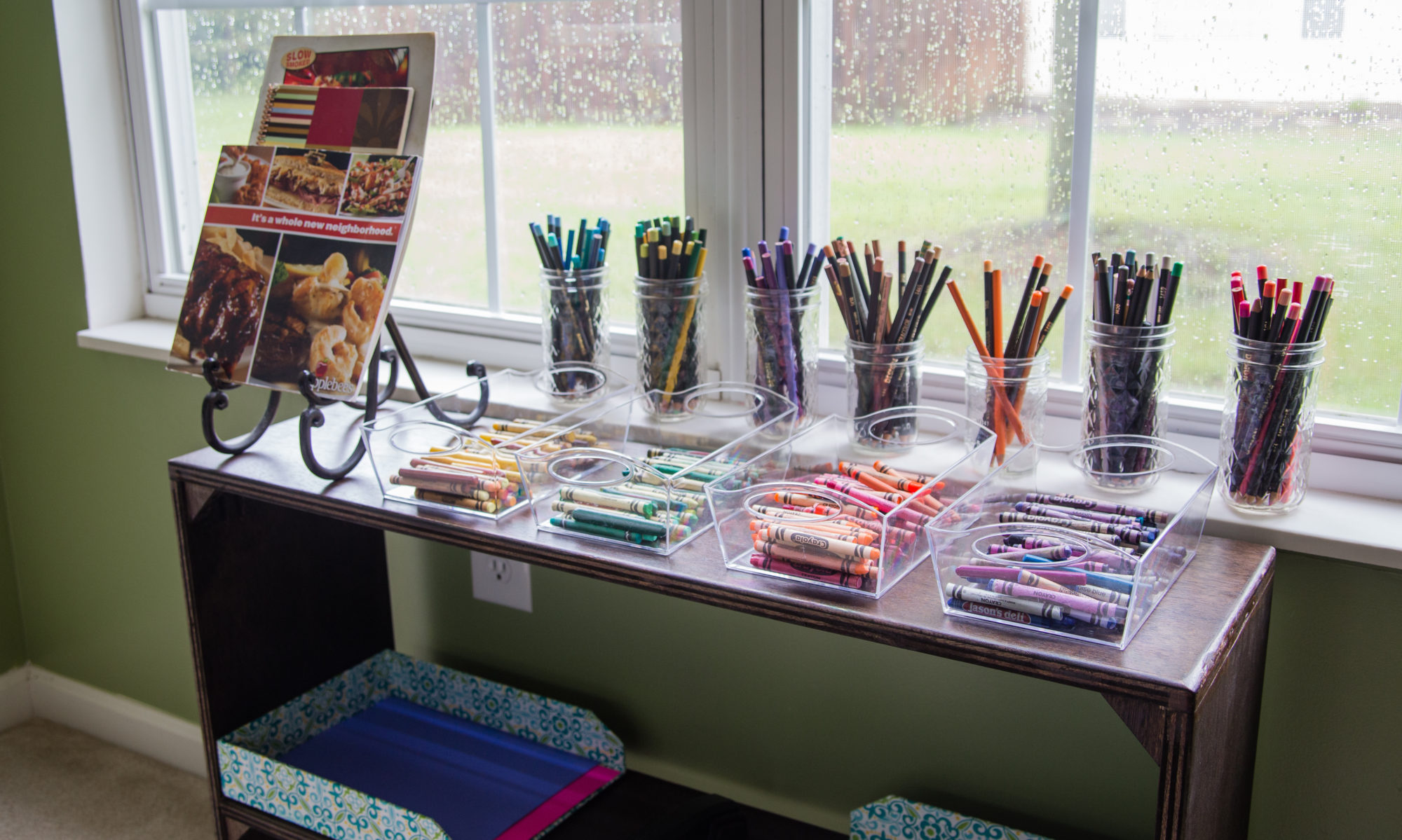Once there was a young girl, not quite 2-years-old, who loved to draw. She joined a group of young artists who also loved to draw, and I was their guide. But when the young girl saw how the other artists used the crayons and pencils, she was horrified!
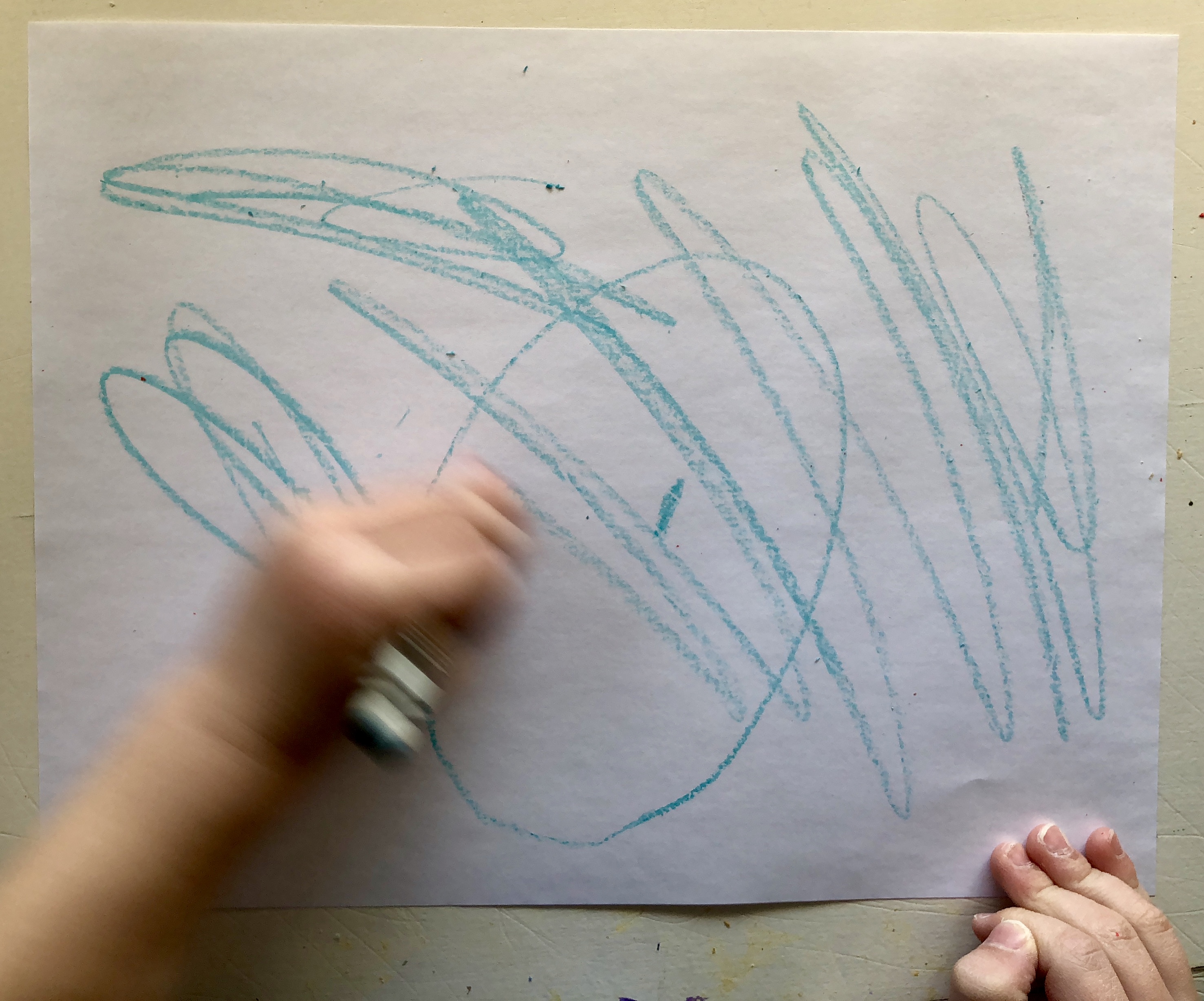
Some of the artists appeared to have no control at all! Their arms and hands flew across the paper without a thought or a plan. They were messy! The girl called out to them, “No! Stop!” She could not bring herself to work around those friends.
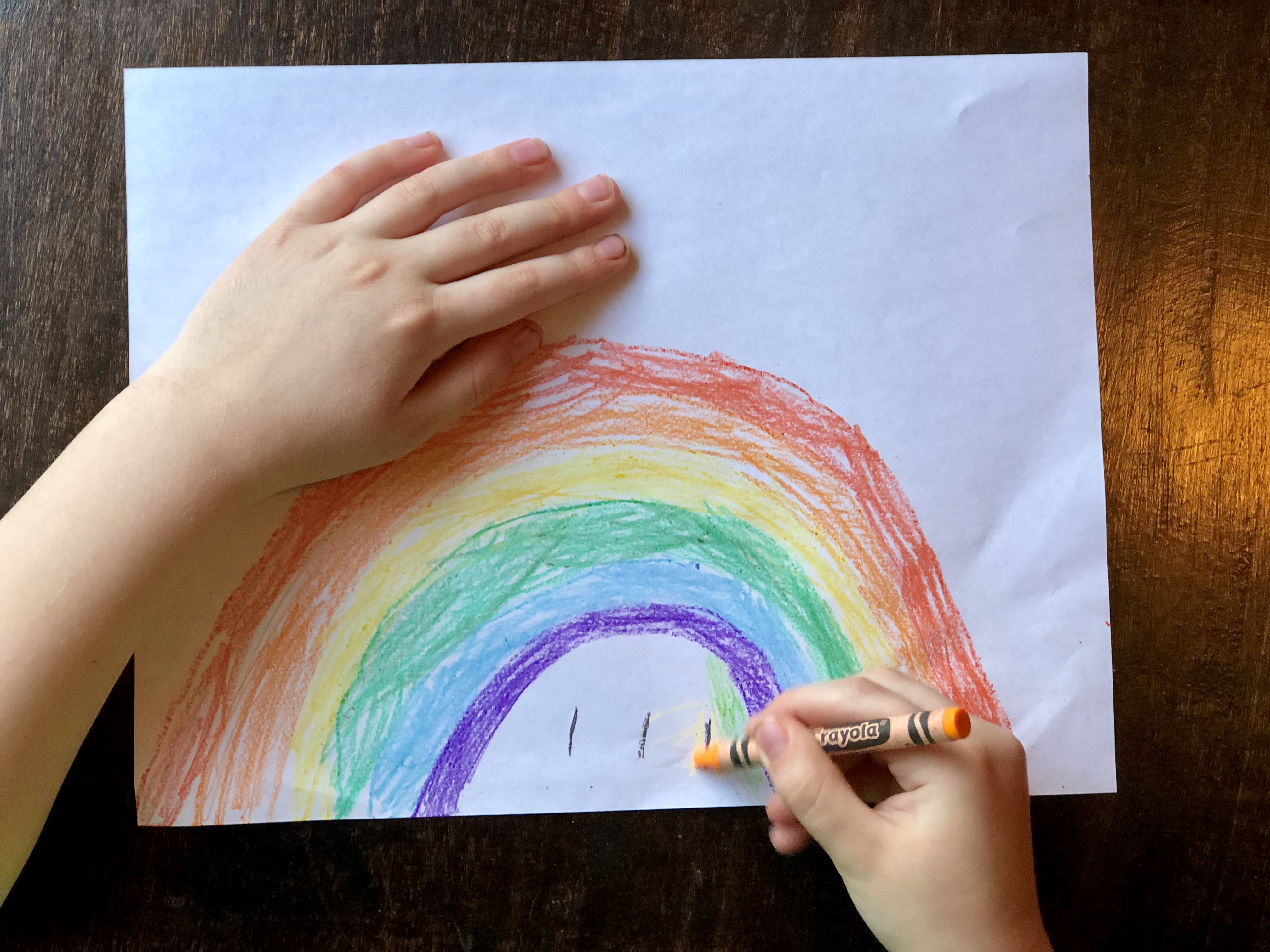
Next, she joined a group of artists who were much more calm and quiet. Their work was meticulous and beautiful, but she soon realized that their drawing skills were far superior to her own.
I could see that she was beginning to feel anxious and unsure of herself, so I devised a plan to help her see art from a different point of view. My plan was based on a simple question, “What if there was a marker who didn’t want to draw?”
Over the next few weeks, I set up a series of experiments to test the question. Before each experiment, I shared a story:
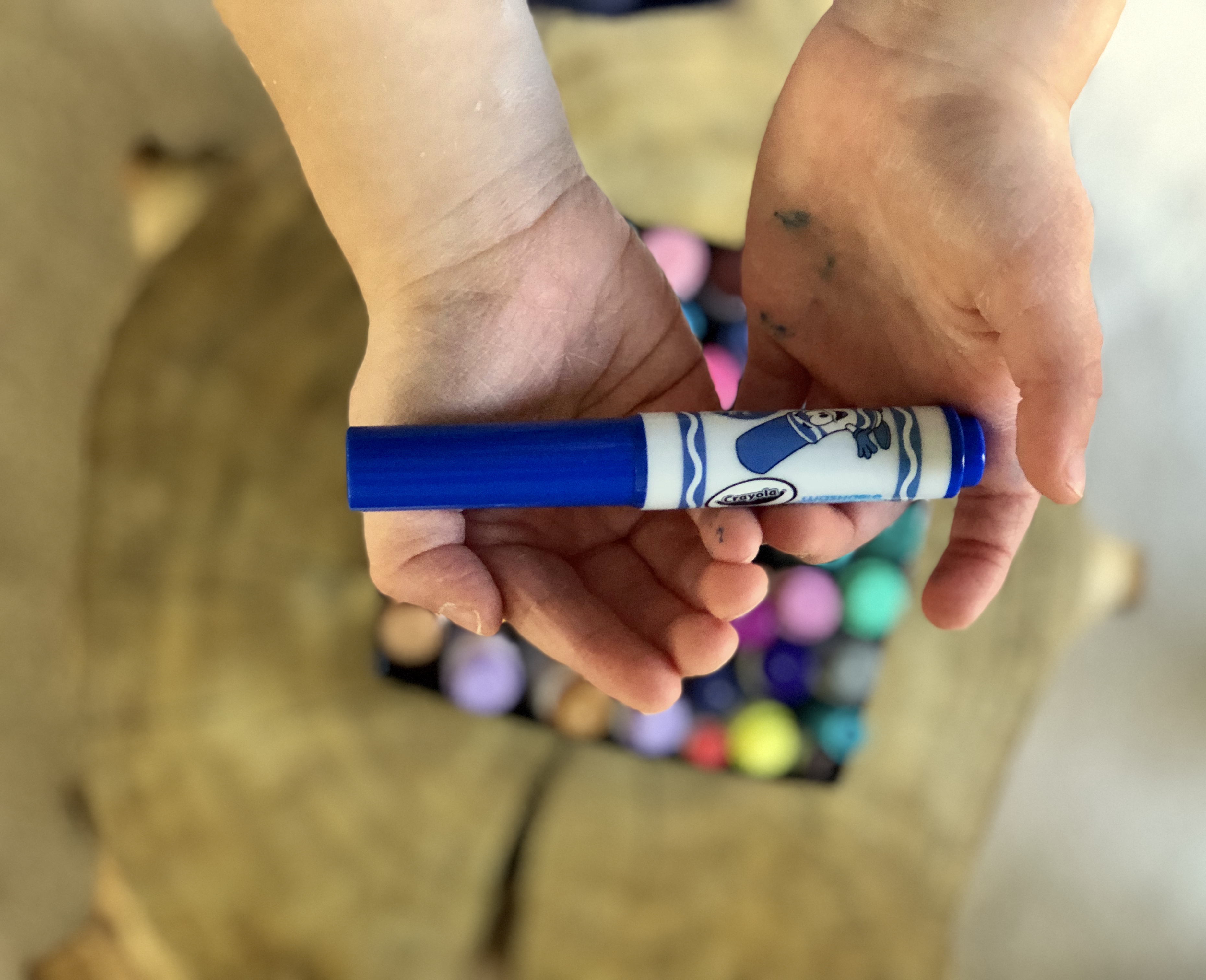
This marker is feeling sad. Every day she watches quietly from her box as friends laugh and play all around her. Whenever a friend helps her out of the box, they expect her to draw. Friends say to the marker, “Draw a car!” or “Make a picture for Mommy!” Sometimes they ask the marker silly questions like, “What is that shape?” or “What color is this?” Sometimes the marker just doesn’t know, and she doesn’t really care either.
This marker knows that she is very good at drawing and making things. She is good at it because she has had a lot of time to practice, but today she and her friends would like to do something different. They want to do what you would like to do. So what do they want to do? How would they like to play today?*
Over a period of six weeks, my young artists had quite a few answers to this question, including the anxious almost two-year-old:
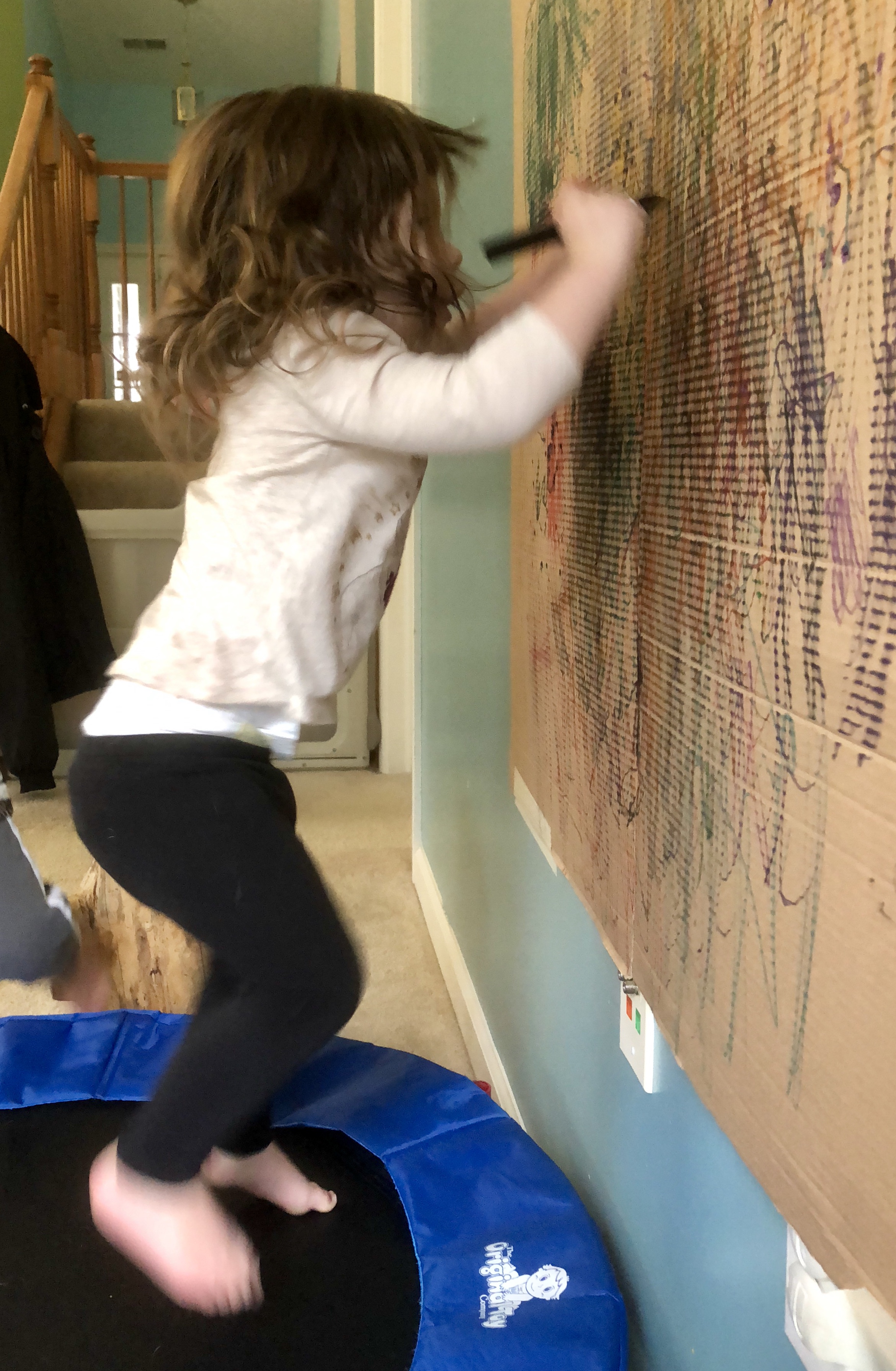
“Go up and down like an airplane!”
“I’m jumping like a tiger!”
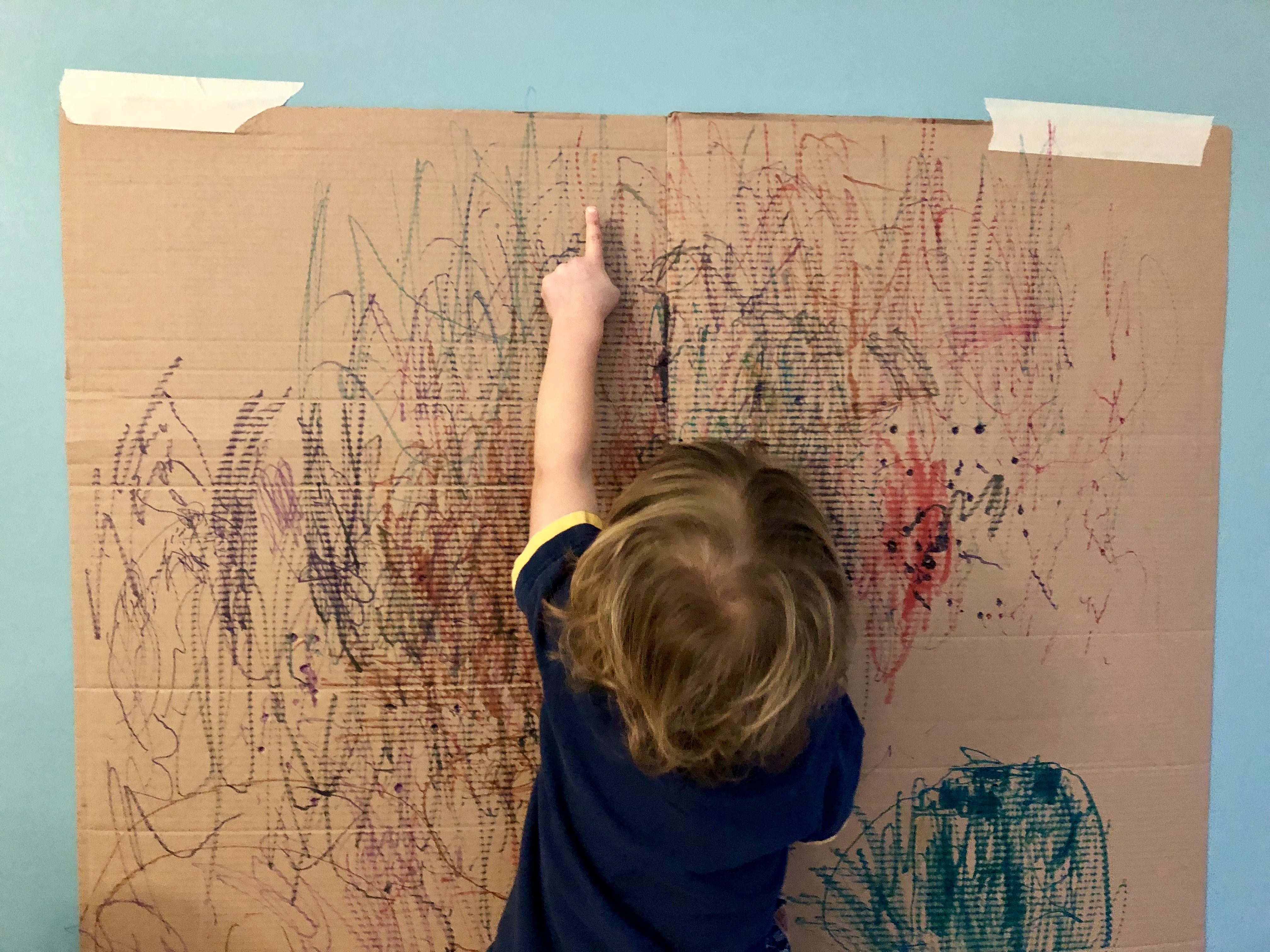
“This one goes down the slide with Daddy!”
“The pink is on a roller coaster!”
“It’s kind of like a spaceship. It flies!”
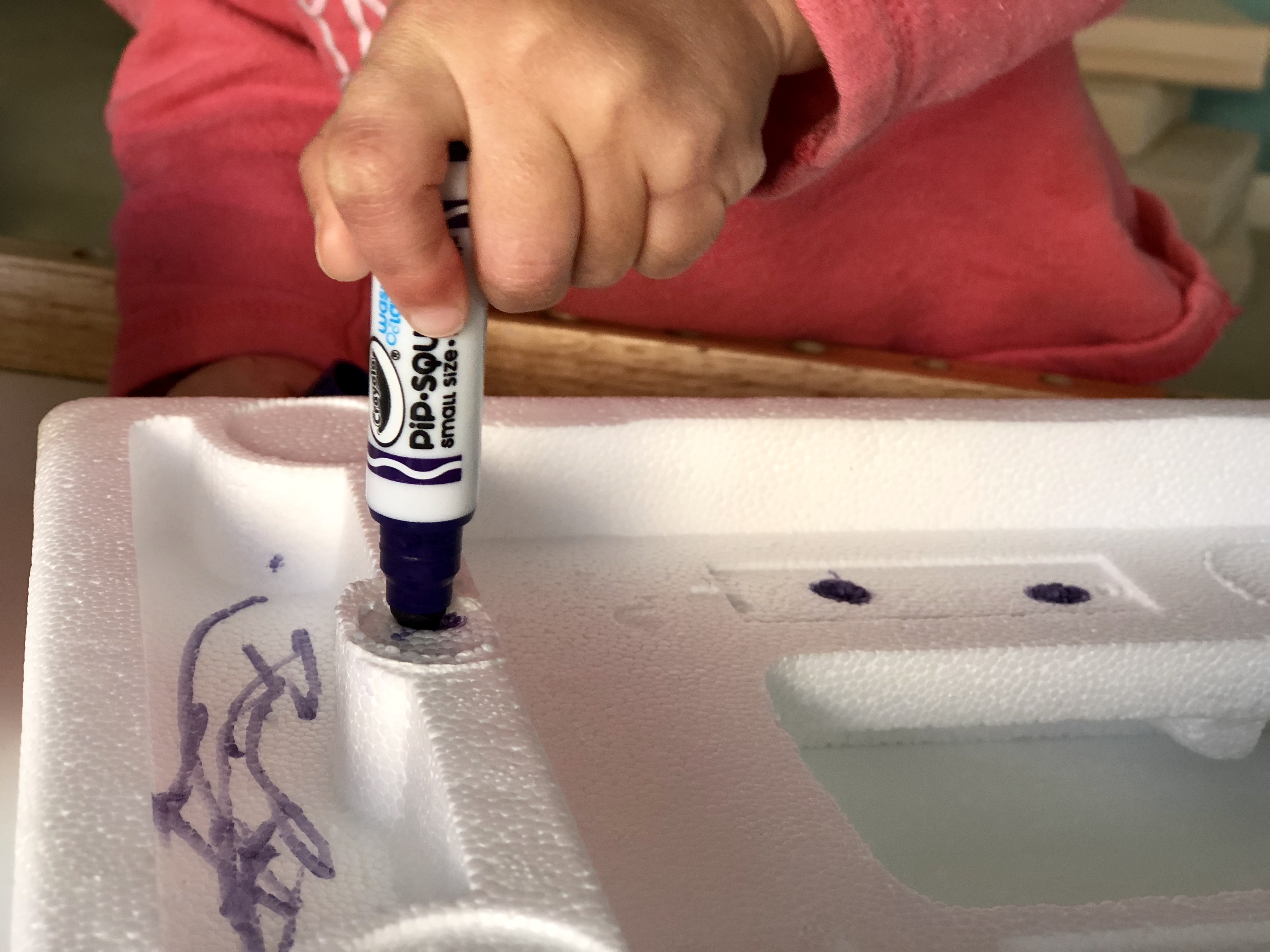
“The brown likes to dig.”
“I have to push hard!”
“I’m digging a DEEP hole!”
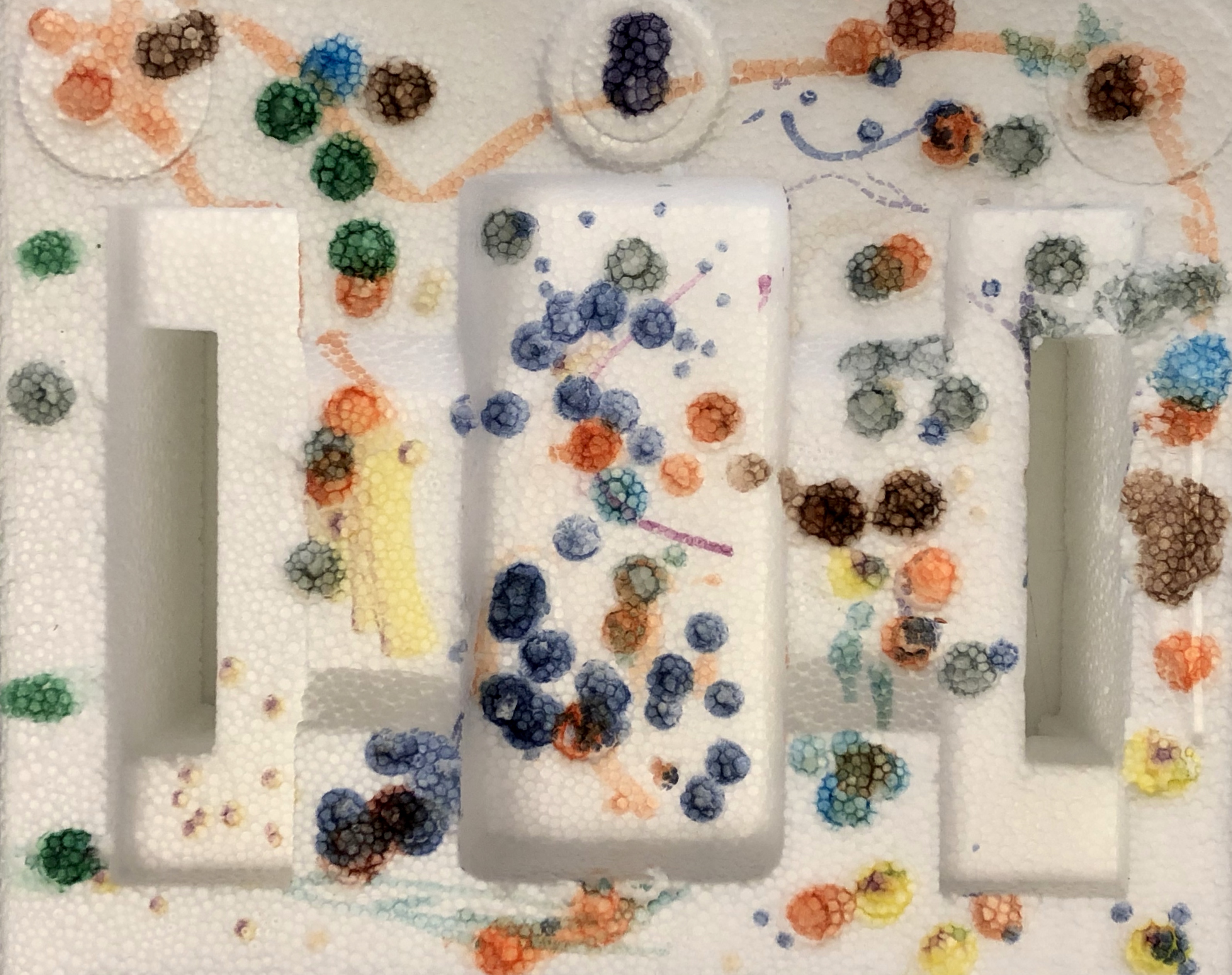
“I’m poking lots of little dots. I will count them 1,2,3…”
“This marker is motorcycling. It’s riding on top.”
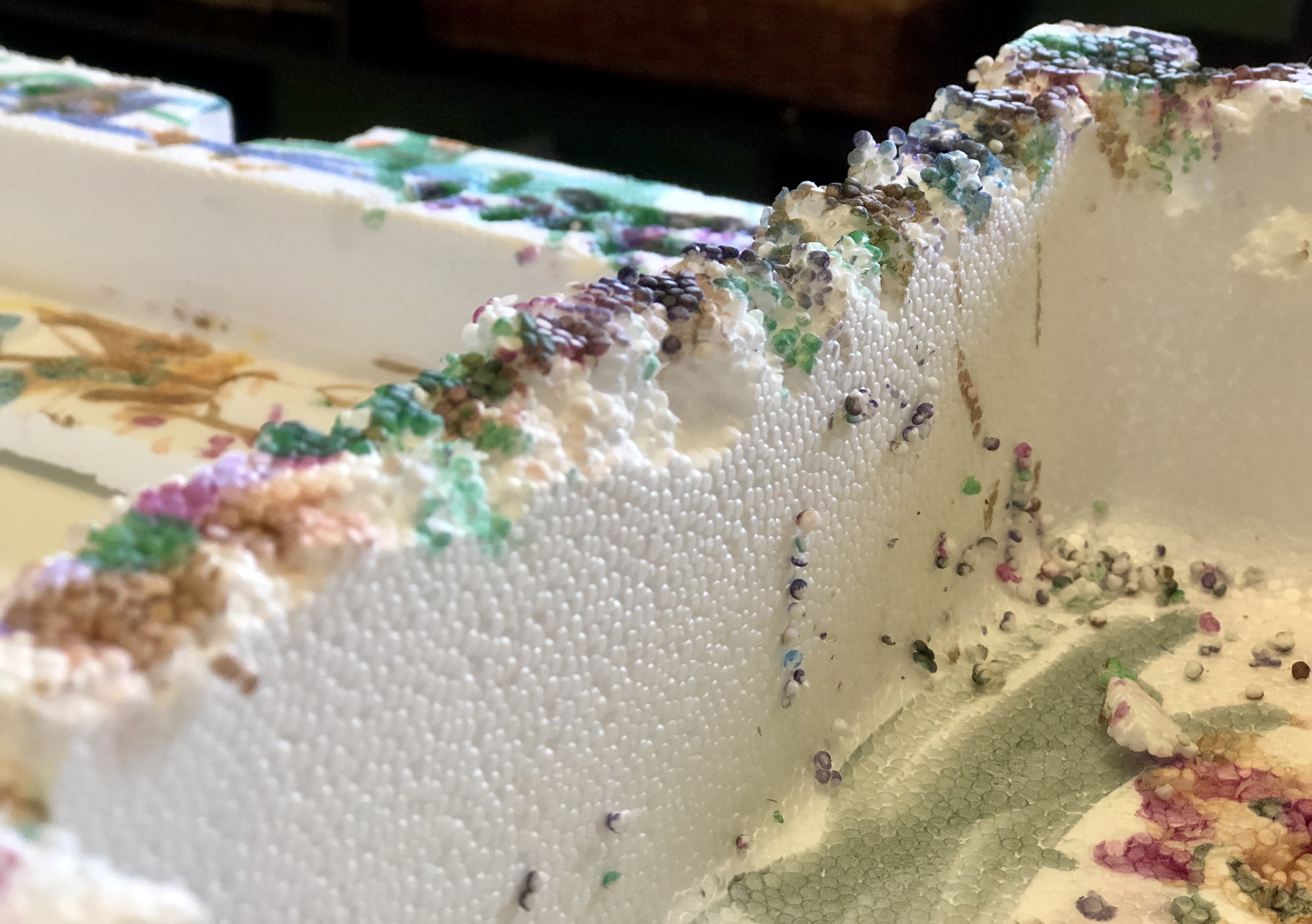
“Look! It’s breaking into orange!”
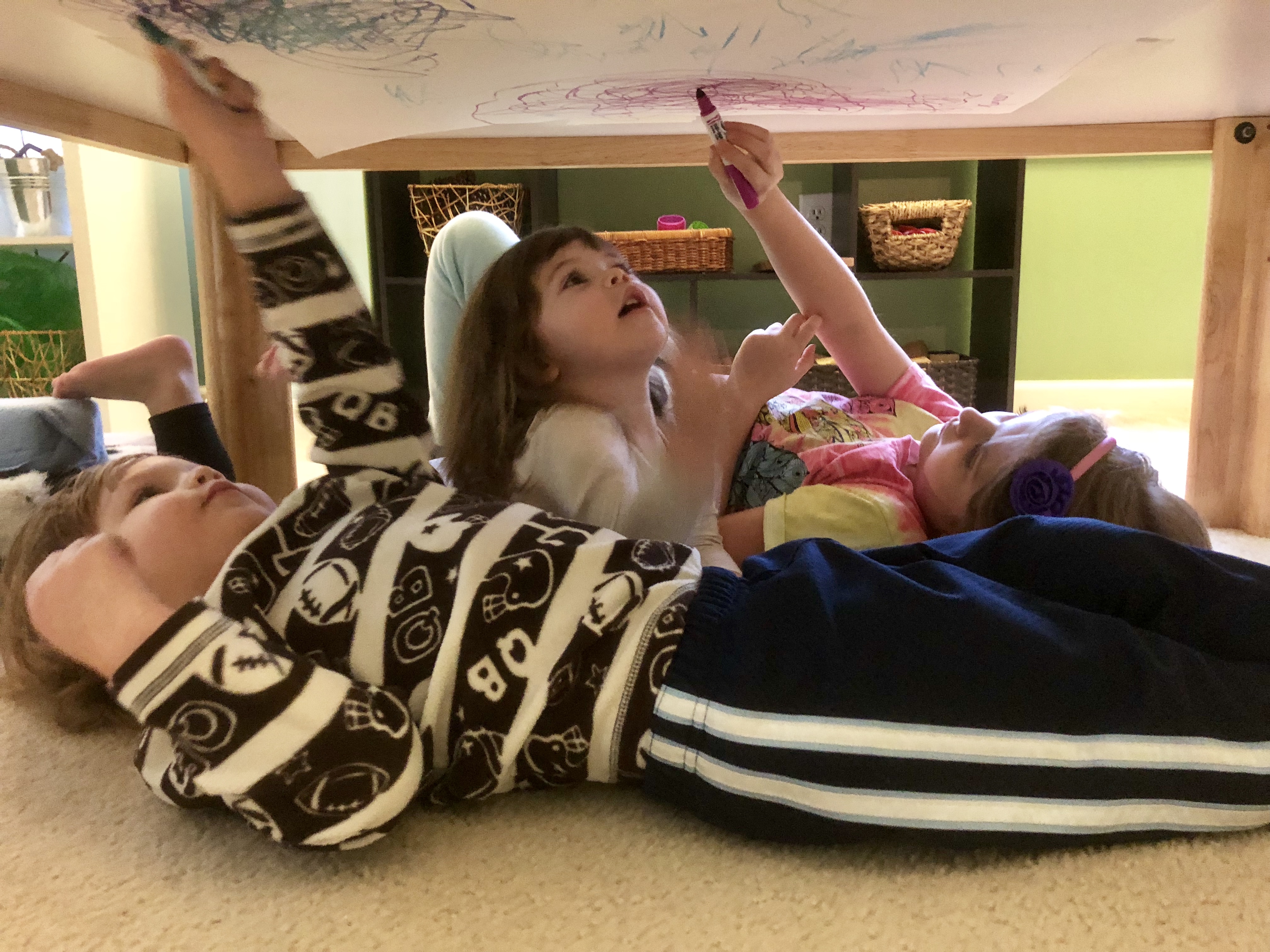
“This marker wants to go upside down now.”
“It’s swirling into backwards Cs!”
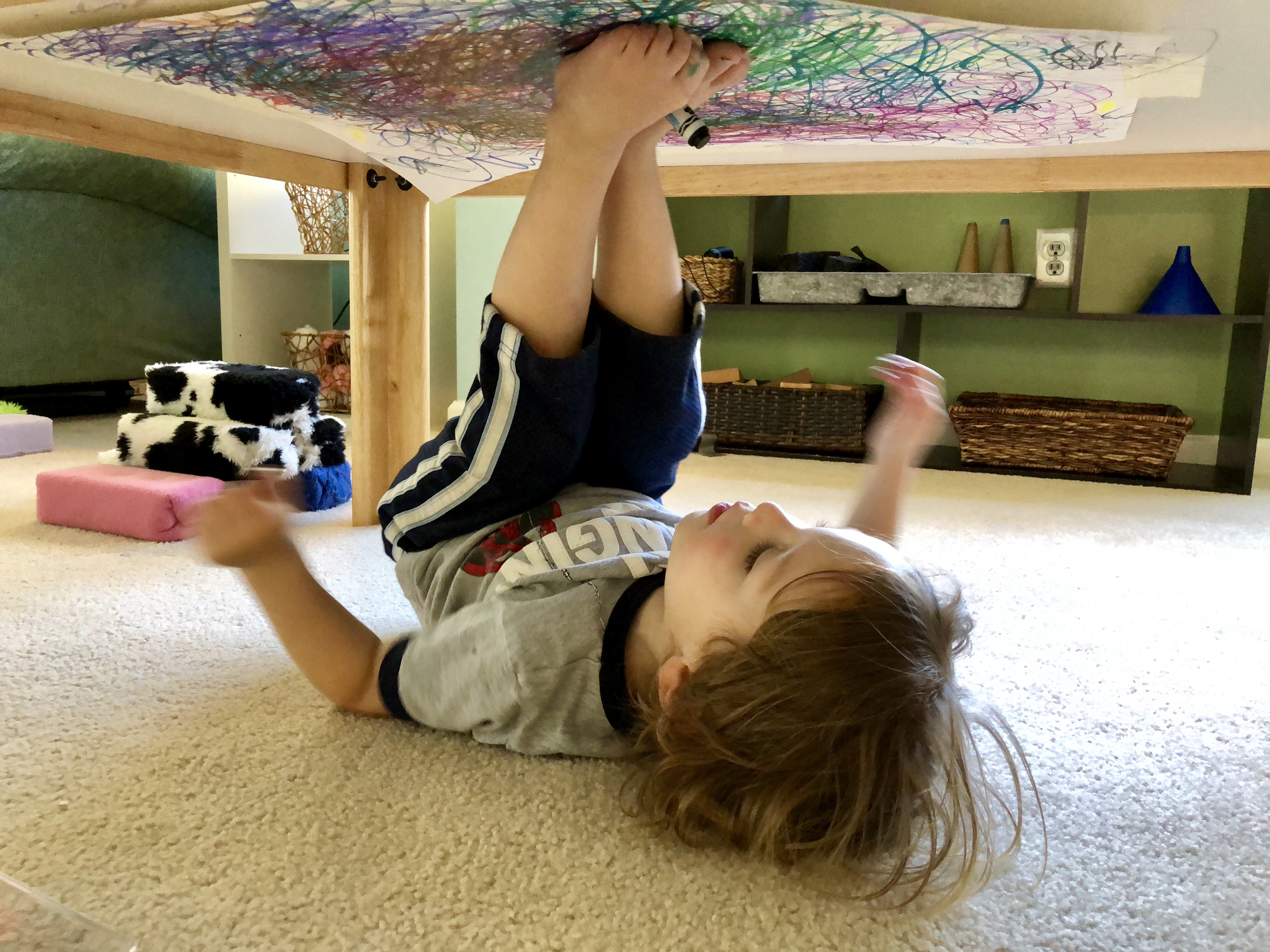
“I’m pinching my feet. This one is ice skating!”
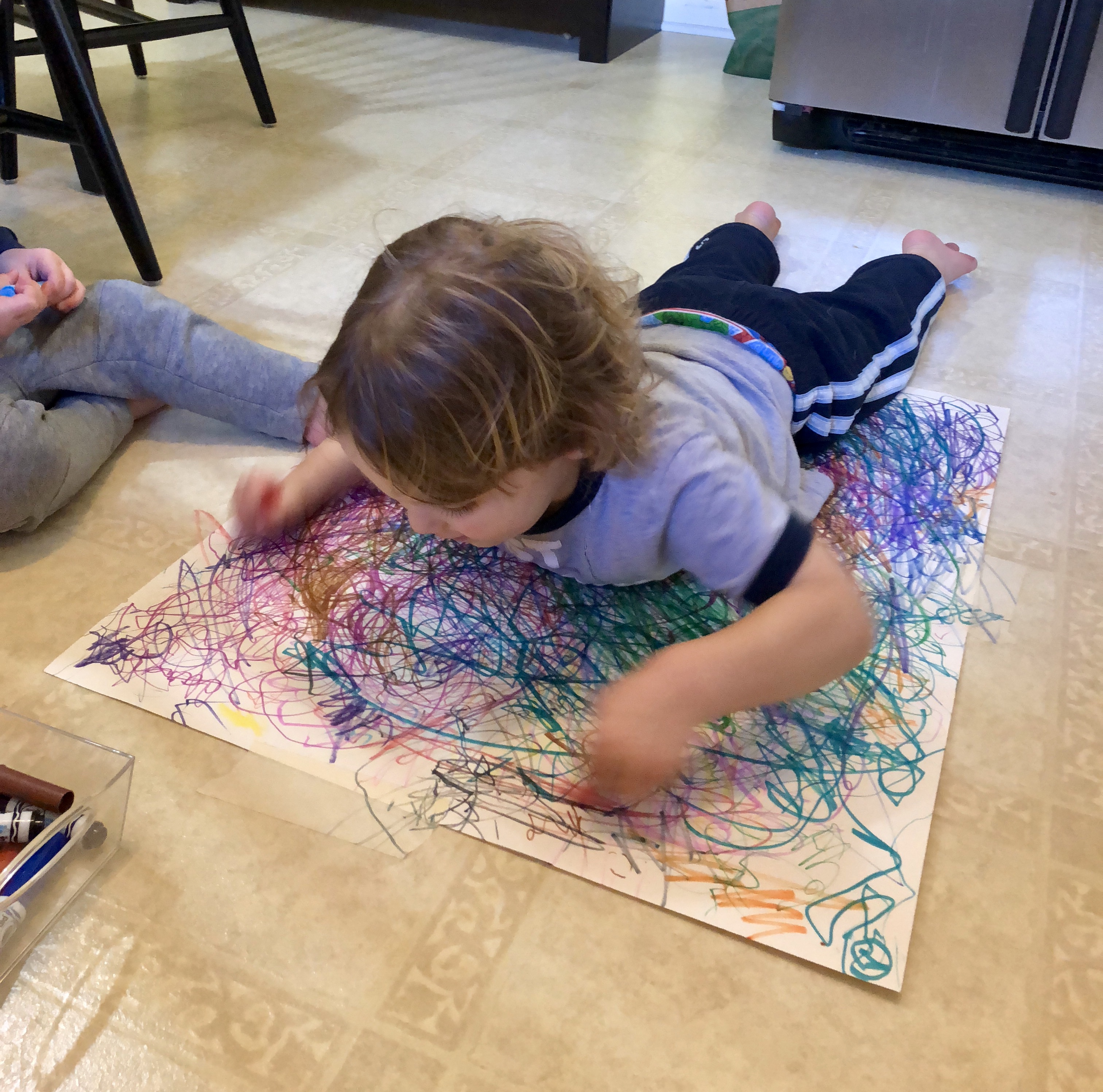
“I’m swimming like my sister!”
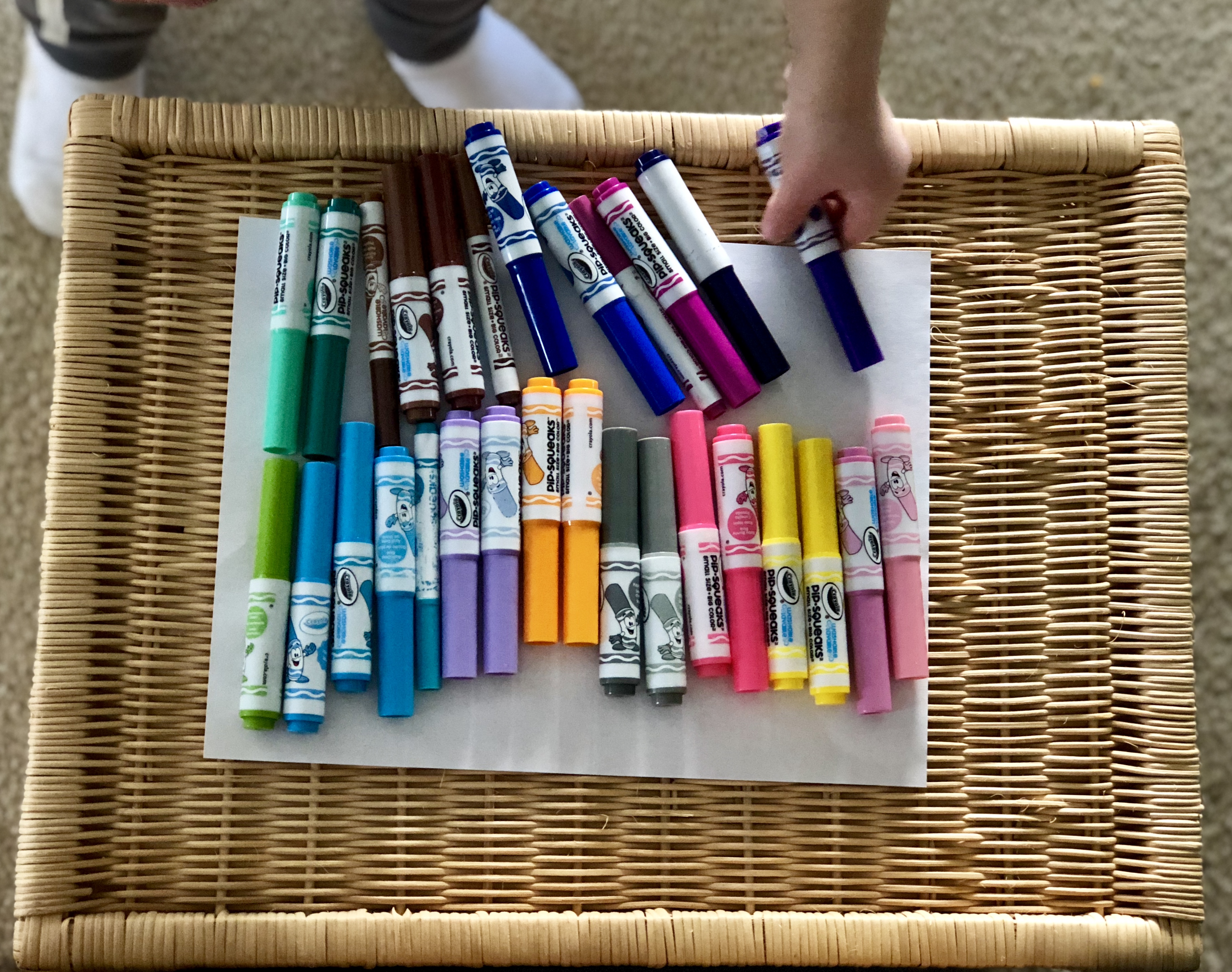
“These markers all like to match, like a family.”
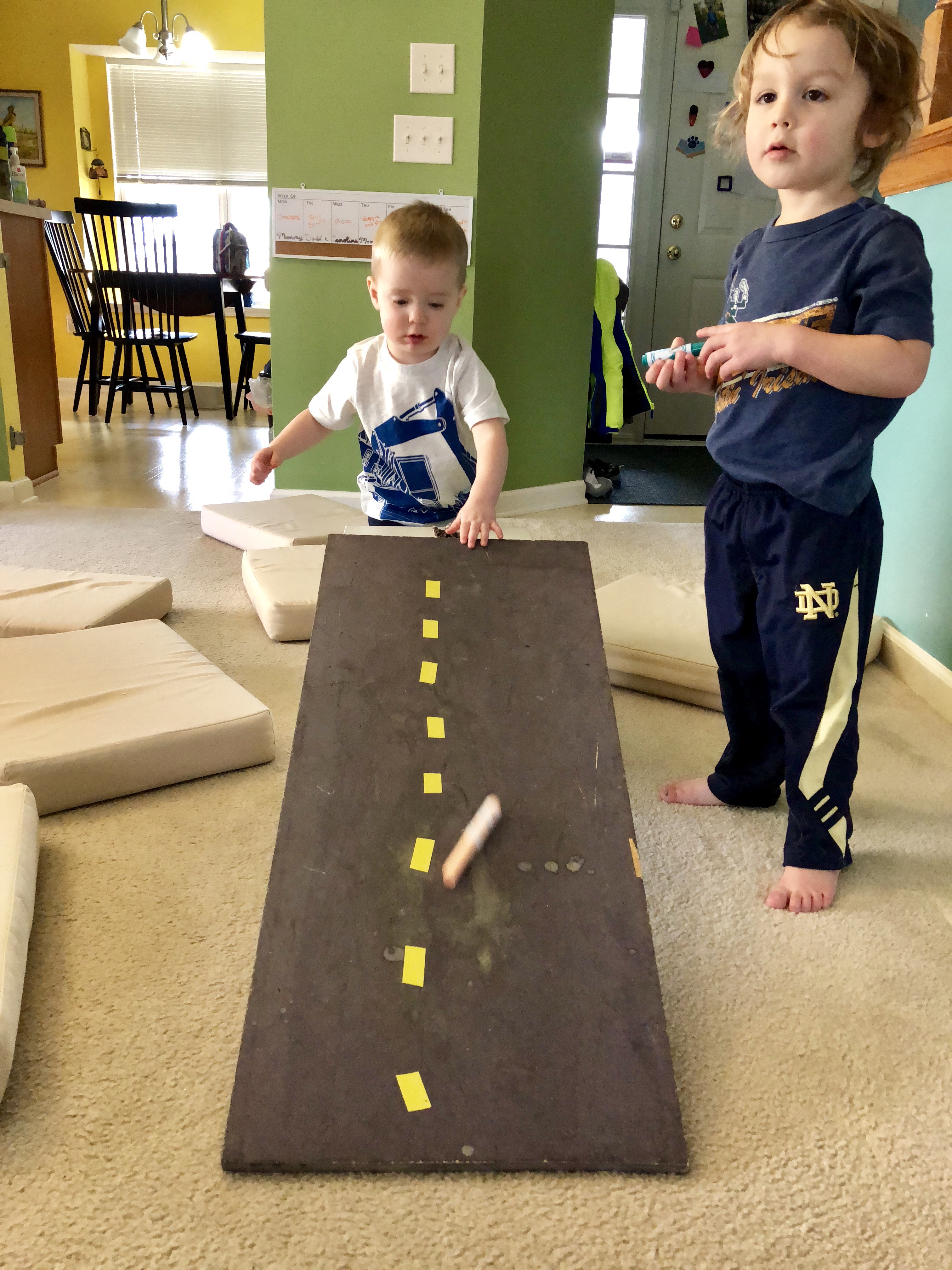
“The markers want to roll today. They are going to race like the cars!”
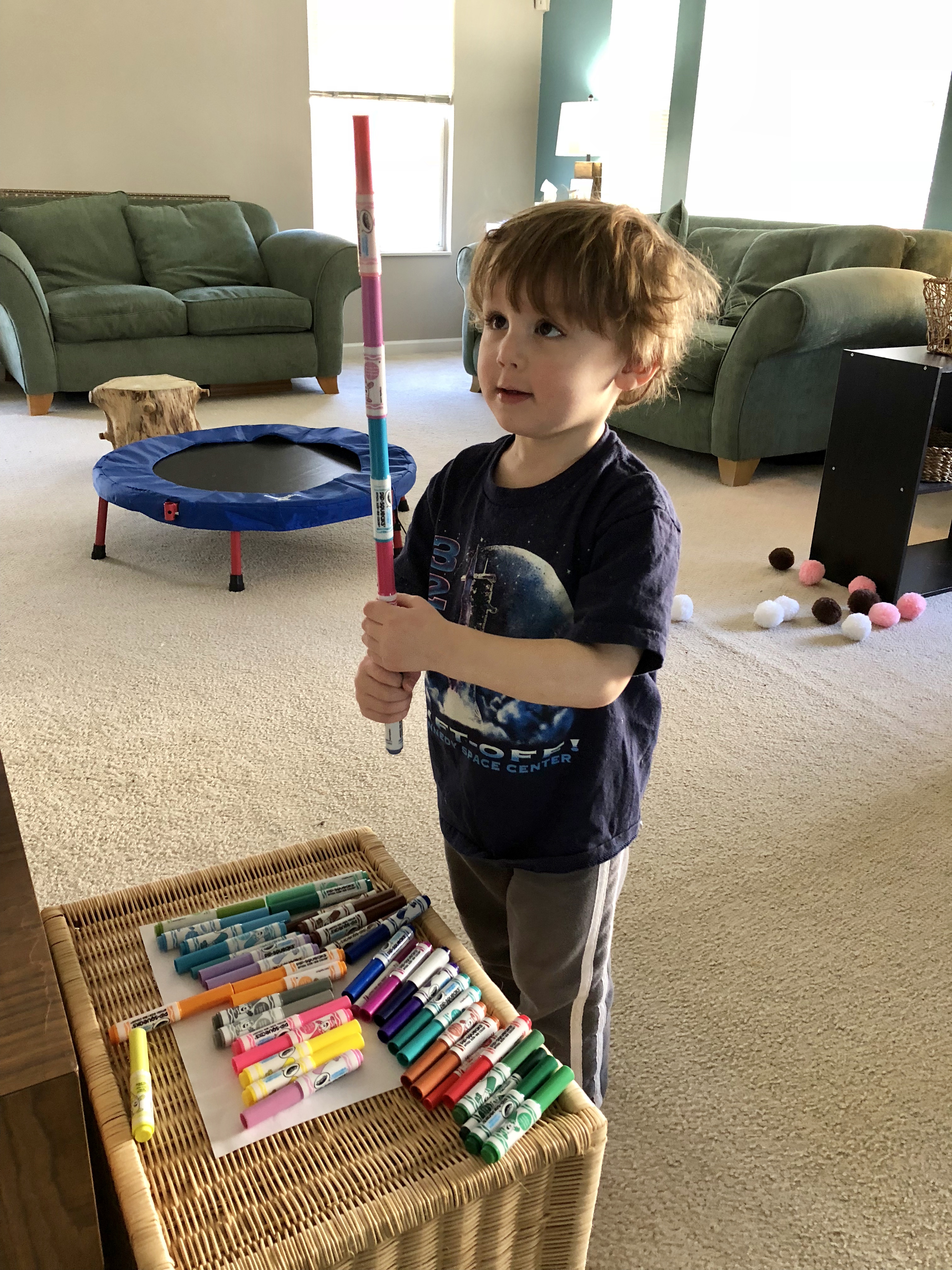
“I’m going to build a tower. It’s really wiggly.”
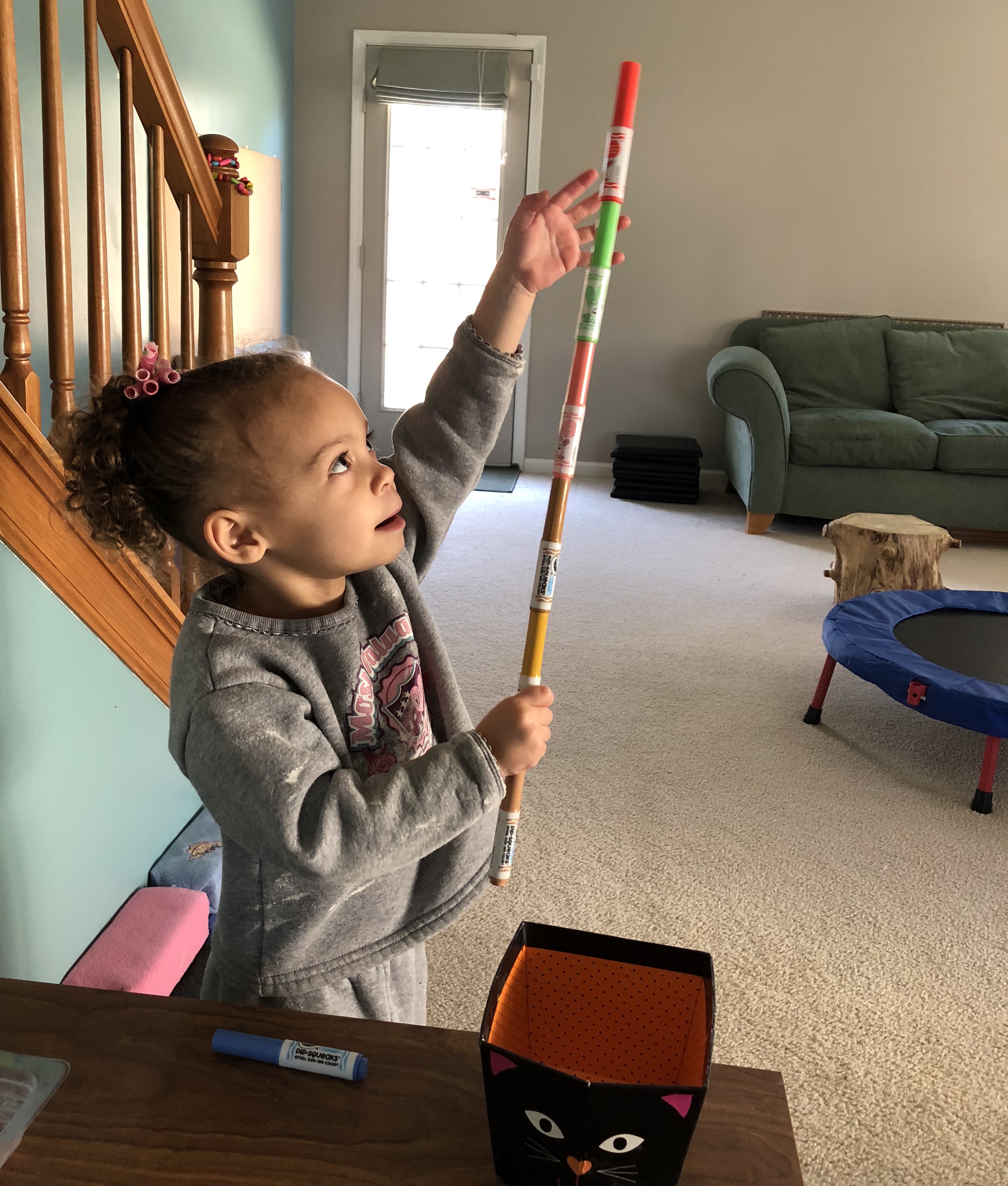
“Be careful! Hold it at the top so it doesn’t crash.”
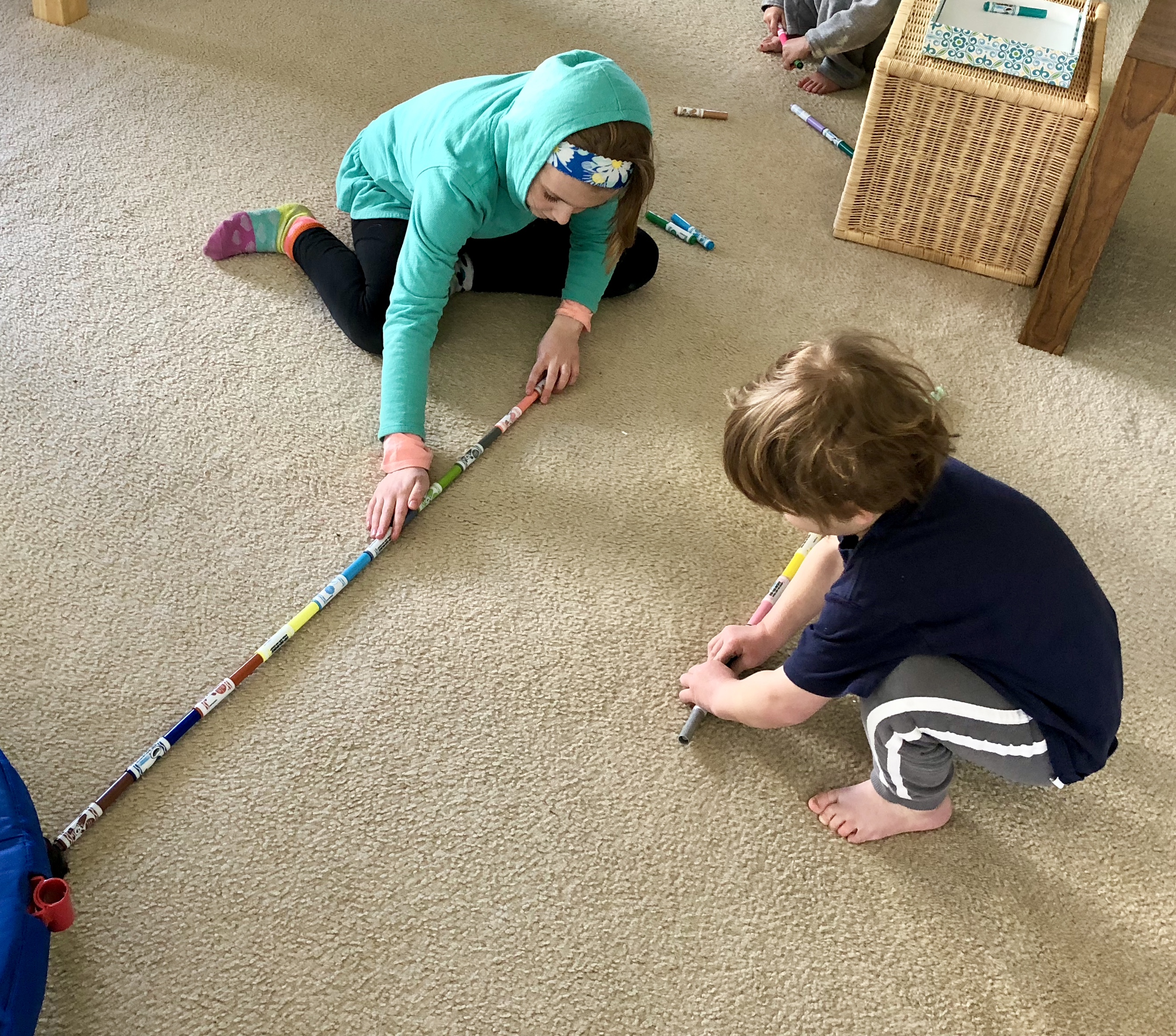
“Let’s see how many markers it takes to get to the basket. It’s like the marker is a measuring unit.”
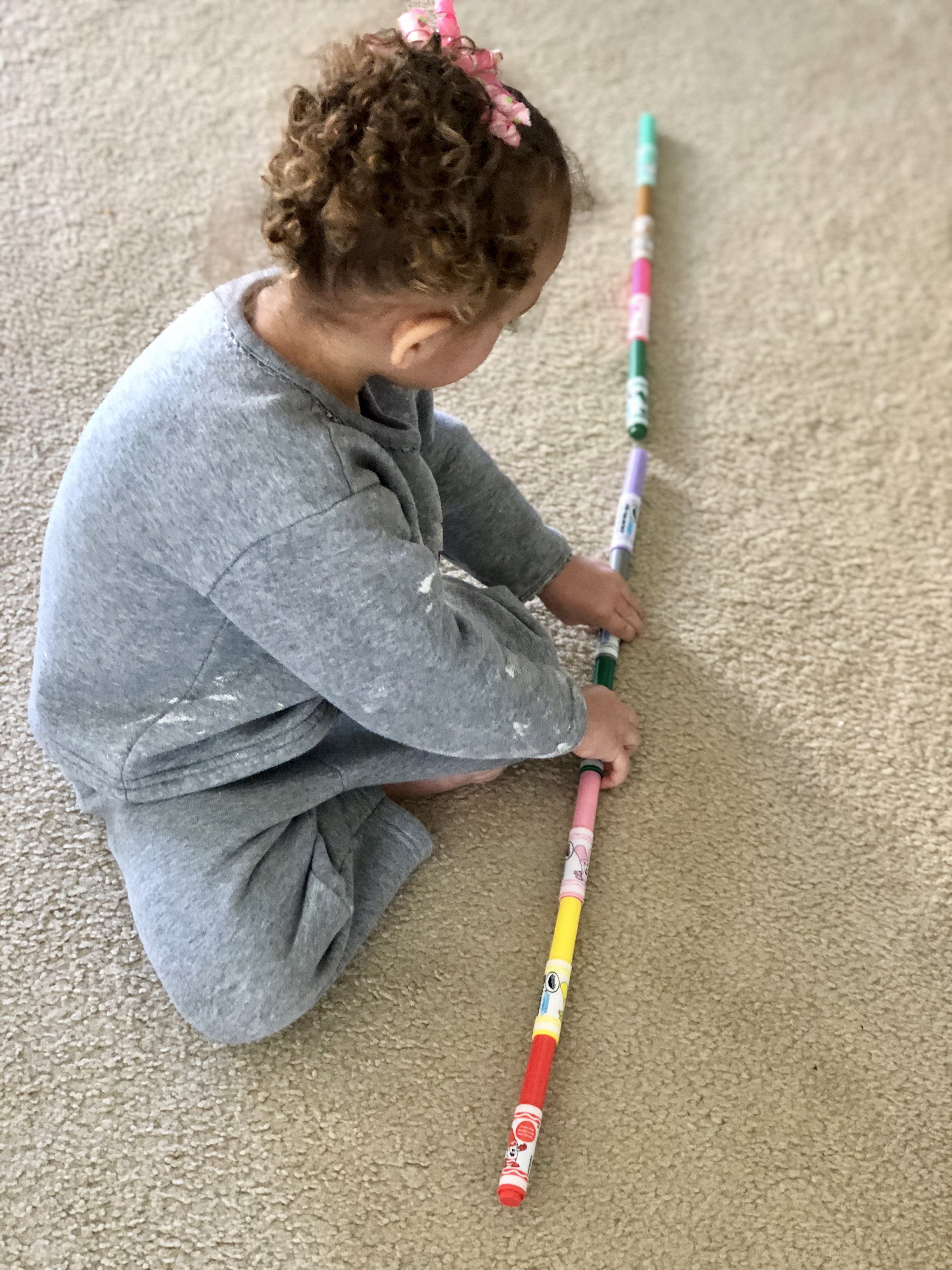
“It’s a train! Oops! It broke in the middle. I can fix it!”
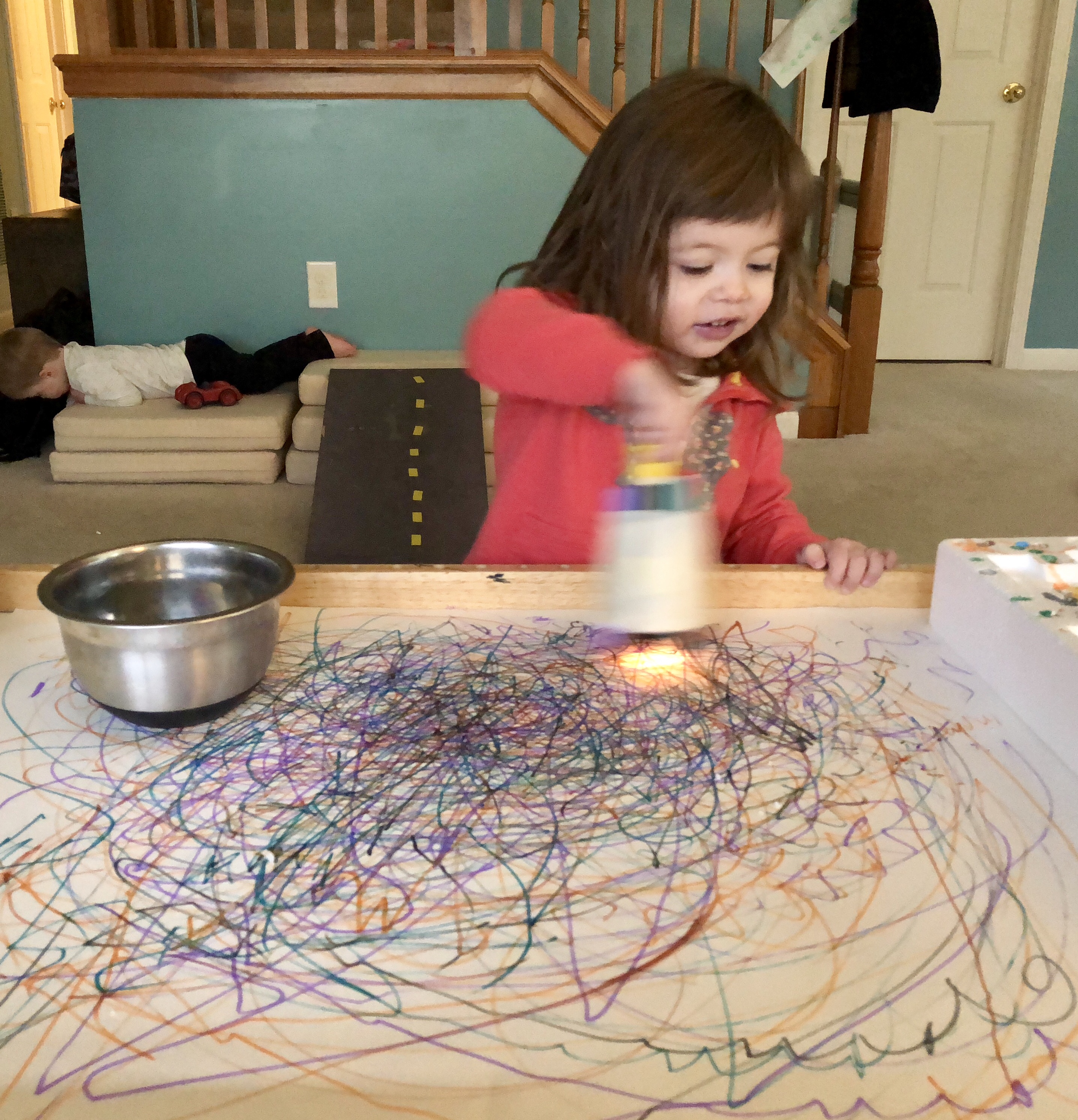
“This is the tornado spinning.”
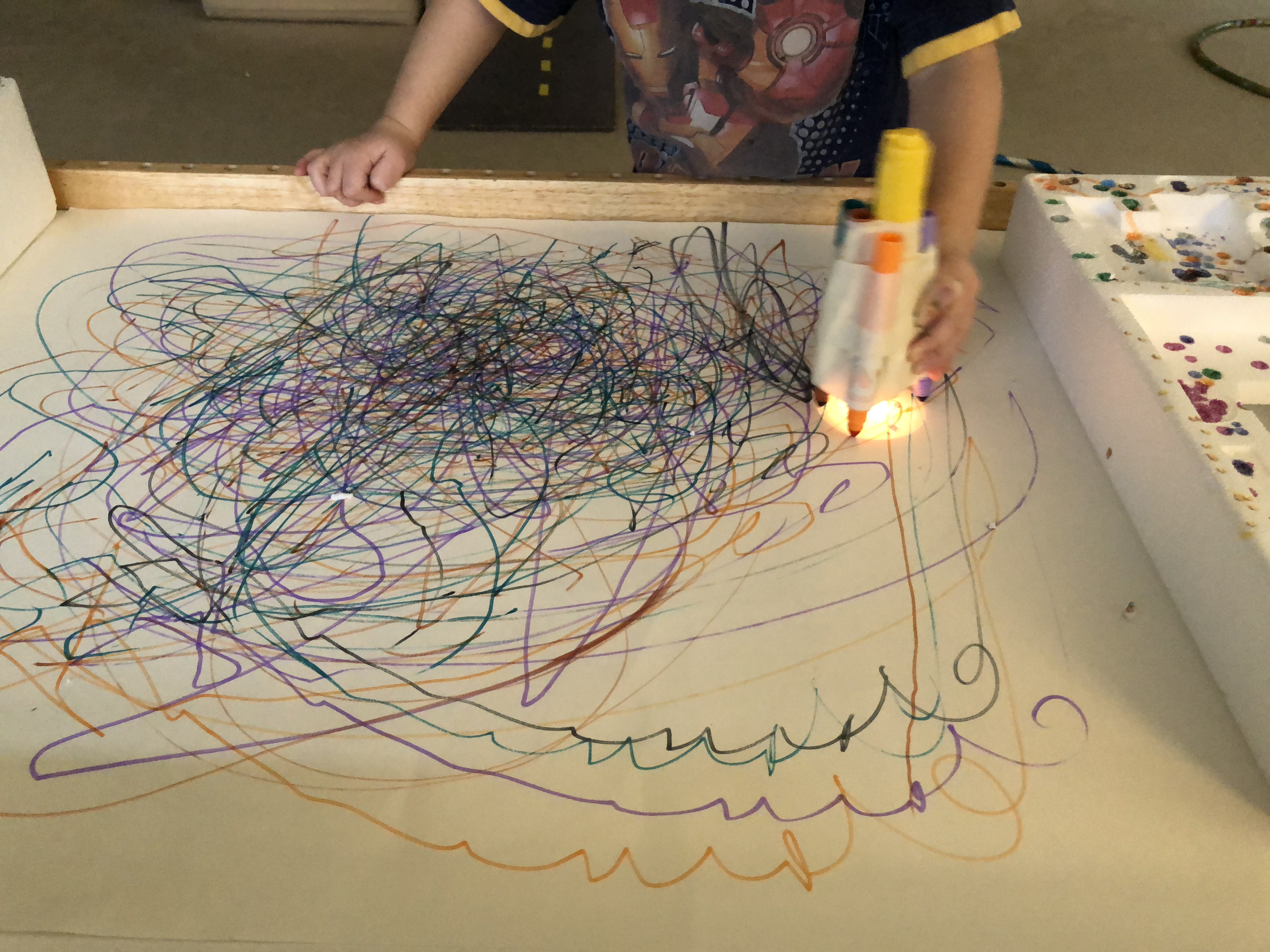
“I’m spinning around in circles. STOP! and GO!”
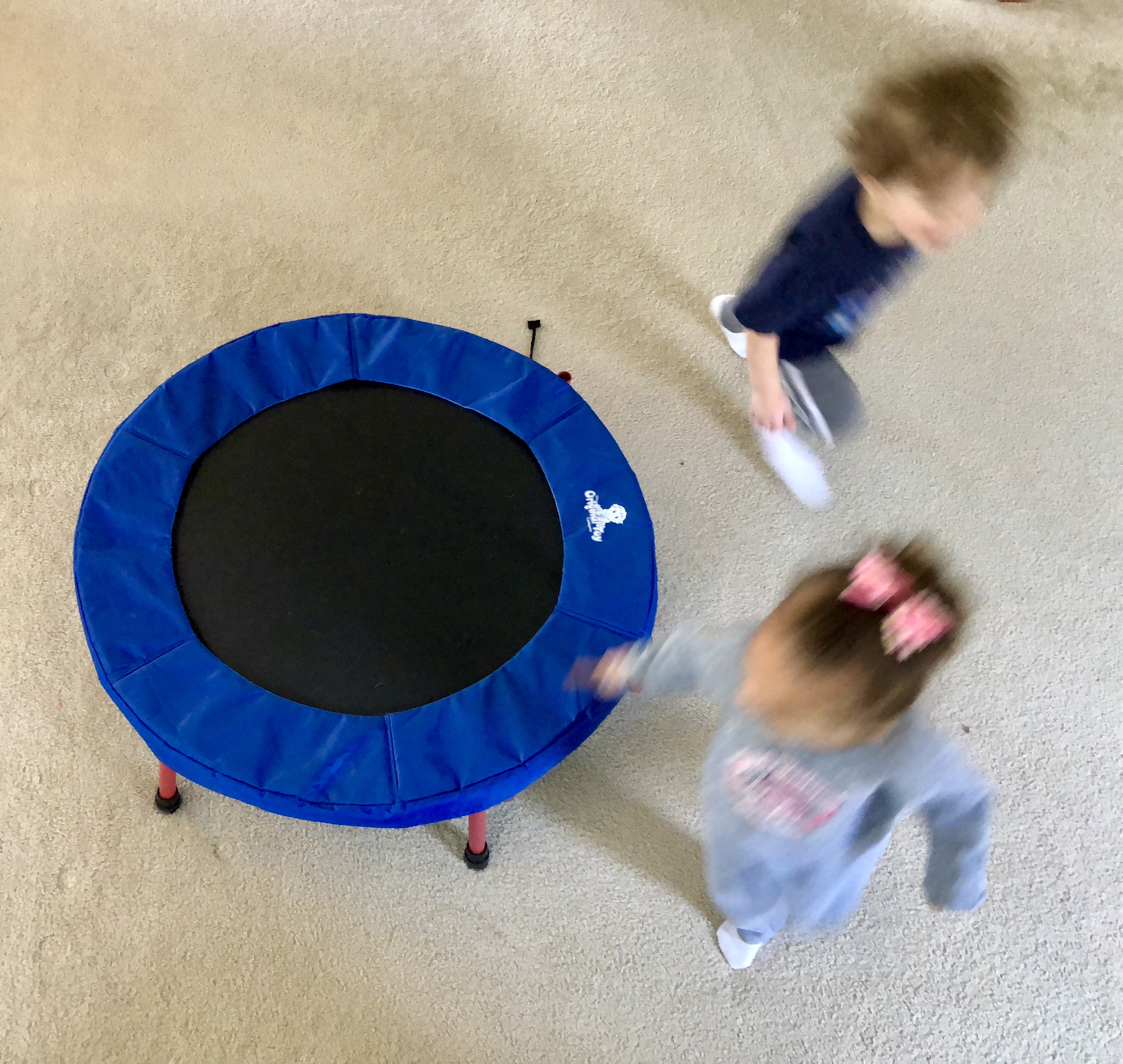
“I want to find circles to spin around.”
“This marker is chasing you around the circles. You better run!”
“First your marker chases me, and then my marker chases you.”
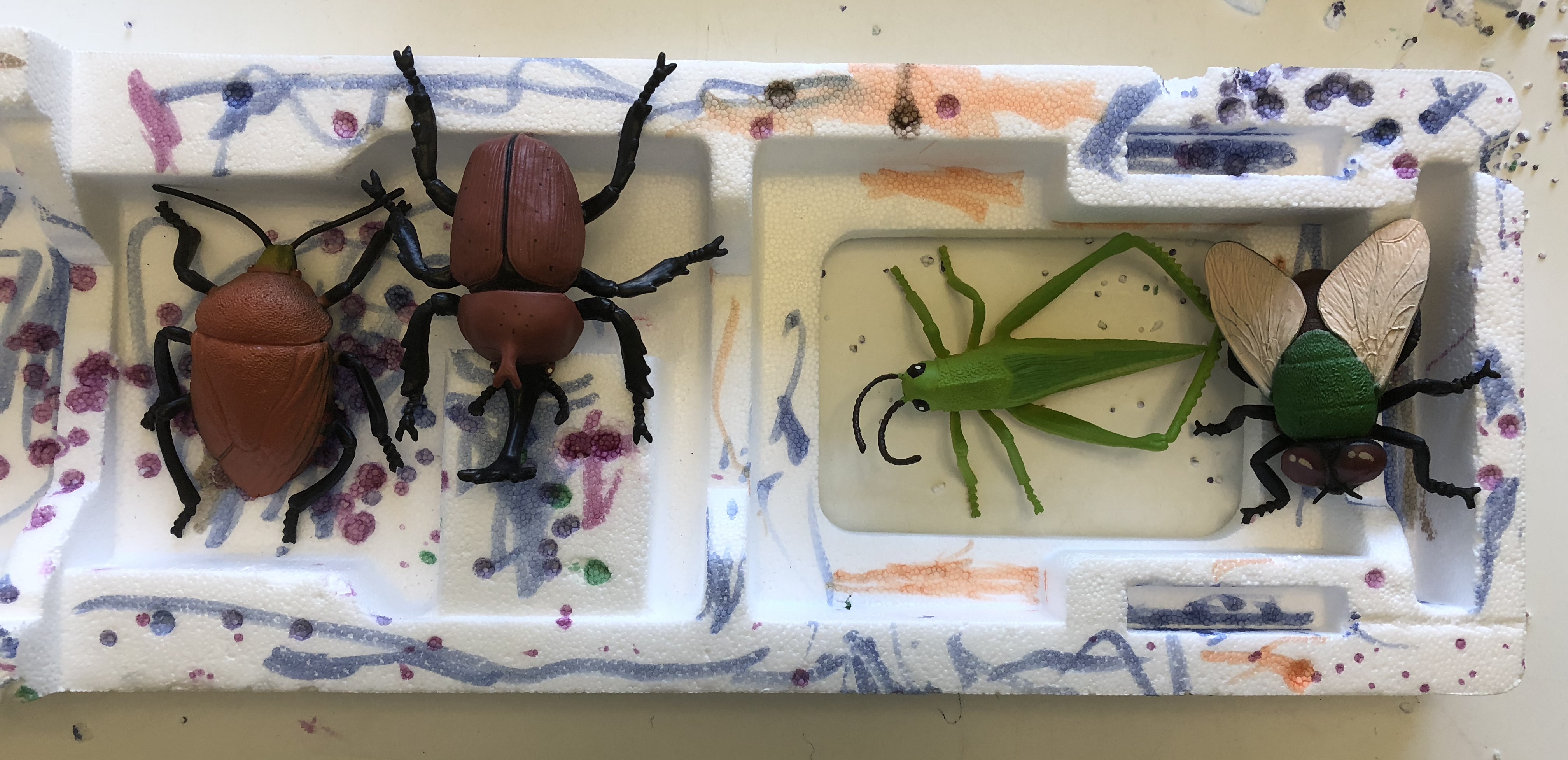
The anxious artist, now fully 2-years-old, is still with us. She still needs my help from time to time, especially being around friends who like to get “messy.” However, she feels much more comfortable expressing herself and her ideas now. She has seen how we celebrate the diversity within each art experience. She has realized that not every experience has to have a plan. Sometimes the only purpose is joy; the only goal is self-confidence. Everything else can wait.
*Full disclosure. We also had a conversation ahead of time, every time, about keeping the markers “safe” during the experiments. The markers were to “keep their helmets on until they had a safe place to land.”
